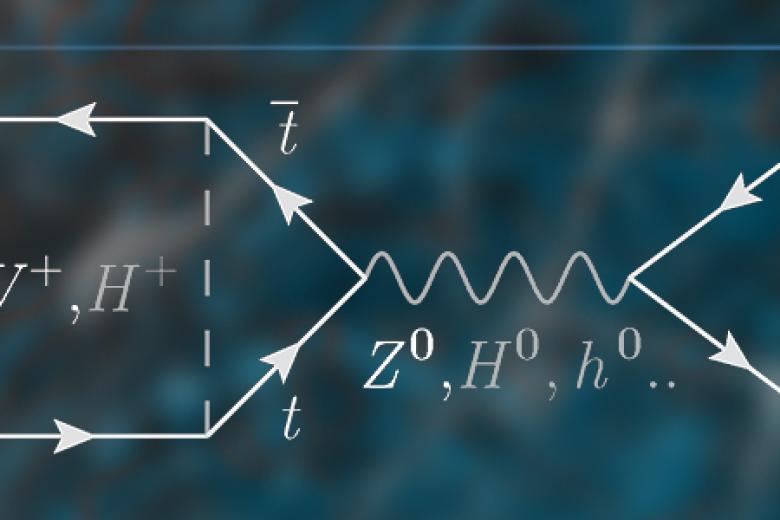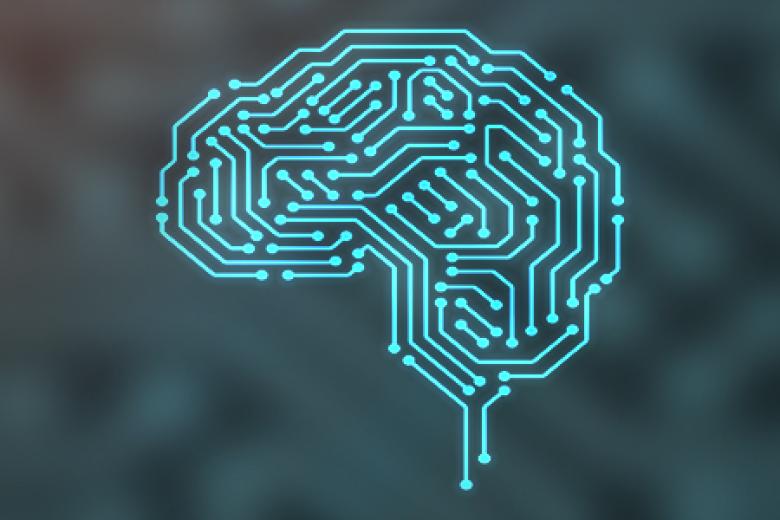Particle physics
The LHCb experiment at the Large Hadron Collider at CERN aims to study the forces of nature - electromagnetic, strong and weak - at the smallest scales and highest energies. Especially in the early universe, right after the big bang, new particles and forces could have had a dramatic impact on the way the universe looks and behaves today. At LHCb, we specialize in measuring the matter-antimatter differences in heavy particles, called CP-violation, and making precision studies of the effects that potential new particles or forces have in very rare particle decays, through so-called quantum loops.
In Maastricht, we contribute to the physics analyses, the operation of the detector at the LHC, and to the algorithms used to reconstruct physics from our data. To face the future challenges of the large amounts of data produced by the particle collisions, we study the applications of machine learning, the use of graphics processing units in high-performance computing [and explore the potential that quantum computing can offer].
Staff
Research topics
Rare decays
Rare particle decays are an excellent way to study the possible existence of new, fundamental particles. Such new particles can have an imprint on properties such as decay rates of rare processes, through so-called ‘quantum loops’. LHCb is the world-leading expert in the search for new particles using rare decays of beauty baryons.

Charm physics
Charm physics: LHCb has collected worlds’ largest samples of particles containing a charm quark. By studying the production and asymmetries of these particles in the high-energy collisions at the LHC, we can learn something about the strong nuclear force that binds these quarks together.

Pattern recognition
Pattern recognition: In order to do physics, the raw data of the LHCb detector needs to be reconstructed: finding true particle tracks from individual readout ‘hits’. As this is run in real-time during the particle collisions (~40 million per second), this falls into the area of high-performance computing. At UM, we are deeply involved with these algorithms, and studying increased performance by using new architectures such as graphical processing units or quantum computers.

Machine learning
Machine learning: Artificial Intelligence or Machine Learning is a great help in extracting useful information from the large amounts of data generated by the particle collisions at the LHC. At MSP, we study the use of various of these tools: deep neural networks, convolutional networks, anomaly detection, long-short term memory, and more. These studies are performed in collaboration with experts at DKE.

Publications
-
Bs2mumu combination with CMS: https://www.nature.com/articles/nature14474
-
Measurement of CP averaged observables in the B^0->K*\mu^+\mu^- decay: https://arxiv.org/abs/2003.04831
-
Measurement of CP asymmetry in Bs->DsK decays: JHEP03 (2018) 059, https://doi.org/10.1007/JHEP03(2018)059
-
Allen: https://www.researchgate.net/publication/338065027_Allen_A_high_level_trigger_on_GPUs_for_LHCb
-
asls: https://journals.aps.org/prl/abstract/10.1103/PhysRevLett.117.061803
-
outer tracker performance: https://iopscience.iop.org/article/10.1088/1748-0221/12/11/P11016
-
Ds production asymmetry: https://link.springer.com/article/10.1007%2FJHEP08%282018%29008
Student participation
Production rates of Xic baryons
Here we perform the full analysis of the production rate of Xic charm baryons at the high-energy collisions at the LHC. The resulting paper will be used by theorists to improve their models of the strong interaction.
- Students: Simon Calo, Jonas Tjepkema, honours project
Anomaly detection in the early universe
In this study we explored the usage of anomaly detection algorithms to generically search for new, unexpected phenomena in the LHCb data.
- Student: Melissa Lopez
Improving particle identification with neural networks
In this study we explored the addition of a new variable, the “time-of-flight”, to the neural network used for the identification of particles in LHCb.
- Students: Lizzy Rieth, Nelson Waakop Reijers
Data selection strategies for CP-violation at the upgraded LHCb detector (2021)
In this study, the trigger strategy for the very important Bs -> j/psi phi decays in 2021 were studied. The inclusion of beauty hadron identification (aka ‘flavour tagging’) parameters in the trigger can significantly enlarge the signal data rates for the near-future data taking at the upgraded LHCb detector.
- Student: Ali Sidley
Modelling the mass shape of charmed particles
In this study, students analysed recent data from the LHCb experiment that include charmed baryons. Various models were built and fitted to the invariant mass distributions in data, to study the effects of detector resolution and signal to background ratio in these reconstructed particles.
- Students: Joyce Cobussen, Jord Muffels, Diyon Wickremeratne, Francesco Marangio
Projects
-
Improving electron reconstruction with machine learning
-
Production rates of Xic baryons
-
Anomaly detection in the early universe
-
Improving particle identification with neural networks
-
Data selection strategies for CP-violation at the upgraded LHCb detector (2021)
-
Modelling the mass shape of charmed particles







